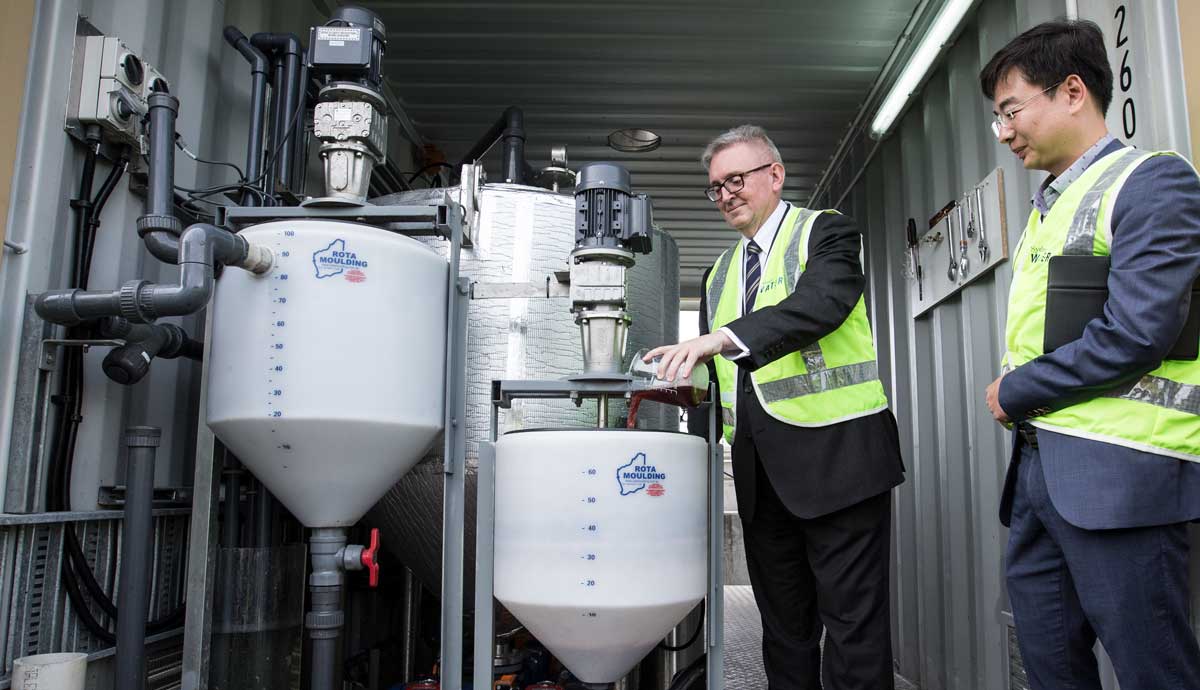May 12, 2017
Innovative research turning your food waste into energy
Households and businesses in Sydney and the Illawarra are set to benefit from an Australian-first research project between Sydney Water and the ÁñÁ«ÊÓƵapp of ÁñÁ«ÊÓƵapp (UOW).
Through a process called called anaerobic co-digestion, food waste will be blended with sewage at Sydney Water's Shellharbour Wastewater Treatment Plant and the mixture is then converted into methane gas, a renewable energy source.
"The project was officially opened today (May 12) by New South Wales Minister for Energy and Utilities The Hon. Don Harwin MLC.
“The first stage of the research is using waste from beverage production and turning into additional energy, so the project is basically turning beer, wine and soft drink waste into power.” Mr Harwin said.
Adding food waste to the wastewater treatment process provides many benefits including:
- More power is able to be generated by the co-digestion process through additional biogas production
- Food waste is diverted away from landfill and greenhouse emissions are reduced
- Producing green energy at the Plant keeps the operation costs of the treatment plant lower, which in turn puts downward pressure on water bills for customers
“Following last year’s determination on Sydney Water’s prices, customers with typical water consumption rates are already saving around $100 per year on an average water bill," Mr Harwin said.
"Projects like this go a long way to making these types of savings possible."

Sydney Water’s Principal Scientist, Dr Heri Bustamante, said Sydney Water is , across all its wastewater treatment facilities.
"Sydney Water now produces enough energy to power over 11,000 homes each year, reducing greenhouse gas emissions by over 70,000 tonnes a year, which is the equivalent of keeping 17,500 cars off the road for a year,” Dr Bustamente said.
The project at Shellharbour will allow researchers to test a range of food waste products in a variety of mixtures to maximise energy production and to ensure that there are no down-sides to the process.
A pilot plant with two 1000-litre digesters have been installed at the Shellharbour Wastewater Treatment Plant. The laboratory scale experiments will be repeated in the pilot plant to get an idea of scale effects.
"Professor , from UOW's Faculty of Engineering and Information Sciences said wastewater treatment plants are the bio-generators of the future.
"There is a great deal of interest worldwide in harnessing the ability to recover energy and nutrients from waste water, in which could turn treatment plants into bio-refineries,” Professor Nghiem said.
"Energy conservation and resource recovery is one of the most challenging issues in expanding cities. This method is one way we hope to make a positive contribution to reducing costs and greenhouse gas emissions.”
"Sydney Water currently generates more than 20 per cent of its across its network and also exports six gigawatt hours (GWh) to the electricity grid over a year.
